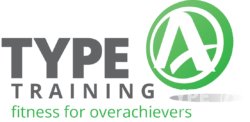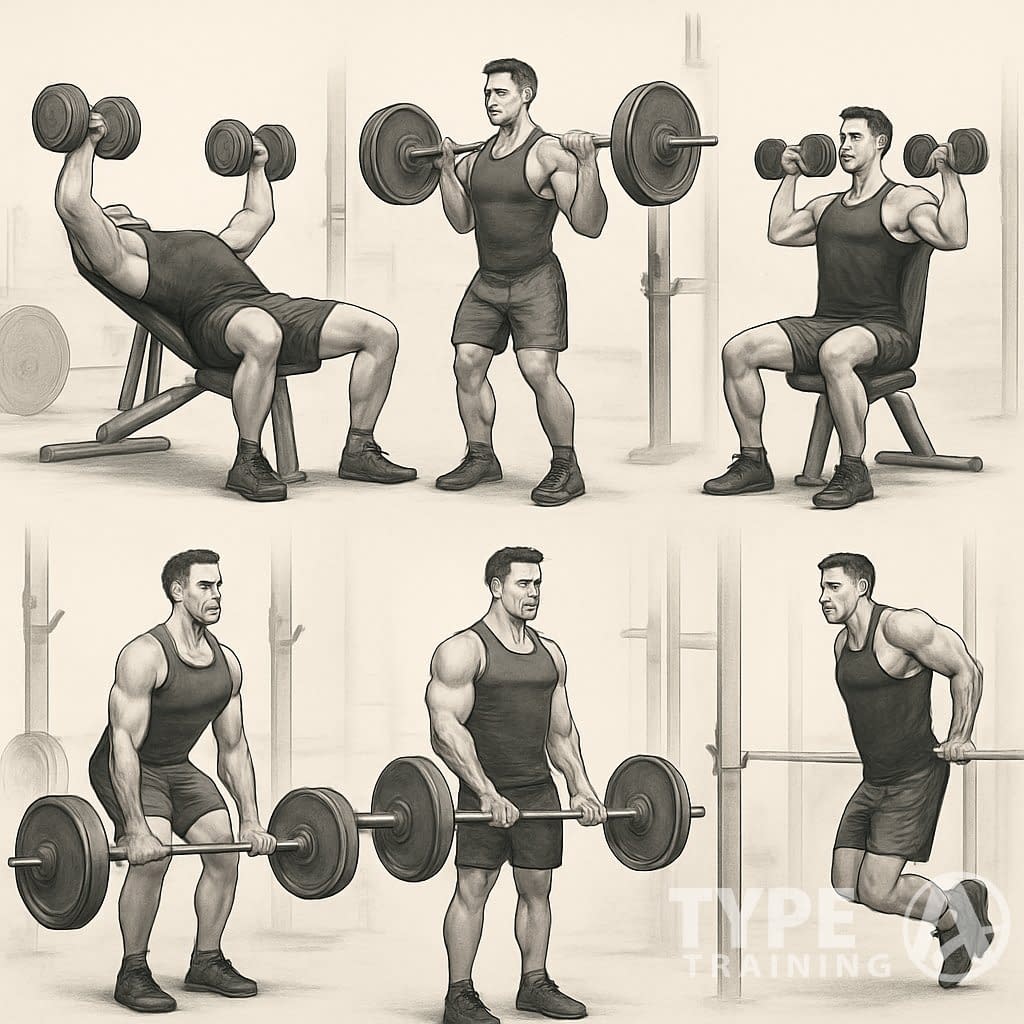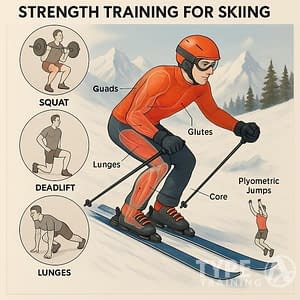Trying to maximize your gym time and push for more muscle gains? The 6 day bro split could be just what you’re looking for.
This popular routine assigns each training day to a specific muscle group, so you’re in the gym six days a week with one day off.
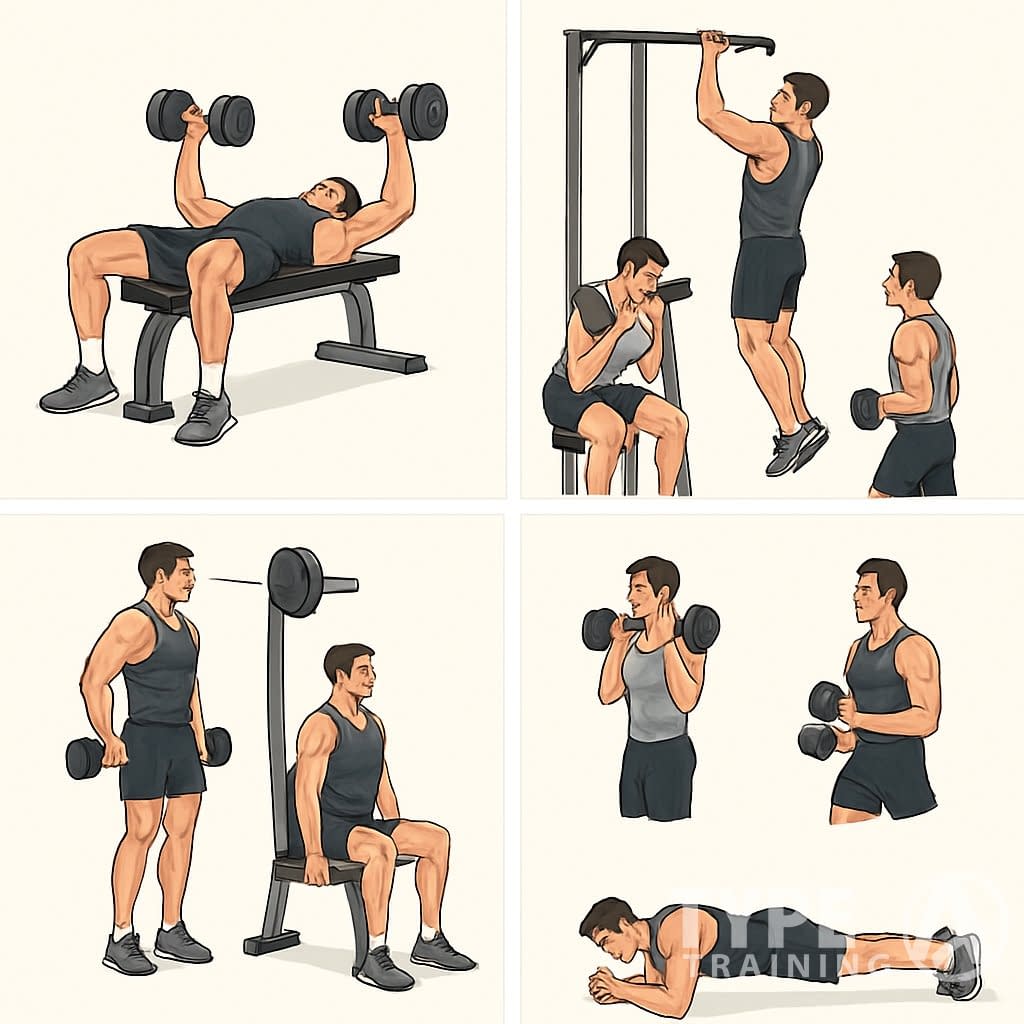
A 6 day bro split workout breaks your week into focused sessions for muscle groups like back, legs, chest, shoulders, and arms. Unlike full-body or upper/lower splits, this one lets you pour more energy and volume into each area—while still getting enough time to recover.
Popular posts:
It’s a great fit if you’re past the beginner stage and want to smash through plateaus. You’ll get more out of this split if you’re consistent and your nutrition is on point.
The 6-day bro split schedule often goes: back, legs, chest and biceps, shoulders and triceps, hamstrings and back, chest and arms, then a rest day. This setup lets you train harder and longer for each muscle group while still getting the recovery you need.
Key Takeaways
- The 6 day bro split targets one or two muscle groups per day for maximum intensity and volume.
- You’ll need some lifting experience and solid recovery habits to keep up with this pace.
- Don’t skip nutrition or your rest day—both are crucial if you want to grow.
What Is the 6 Day Bro Split?
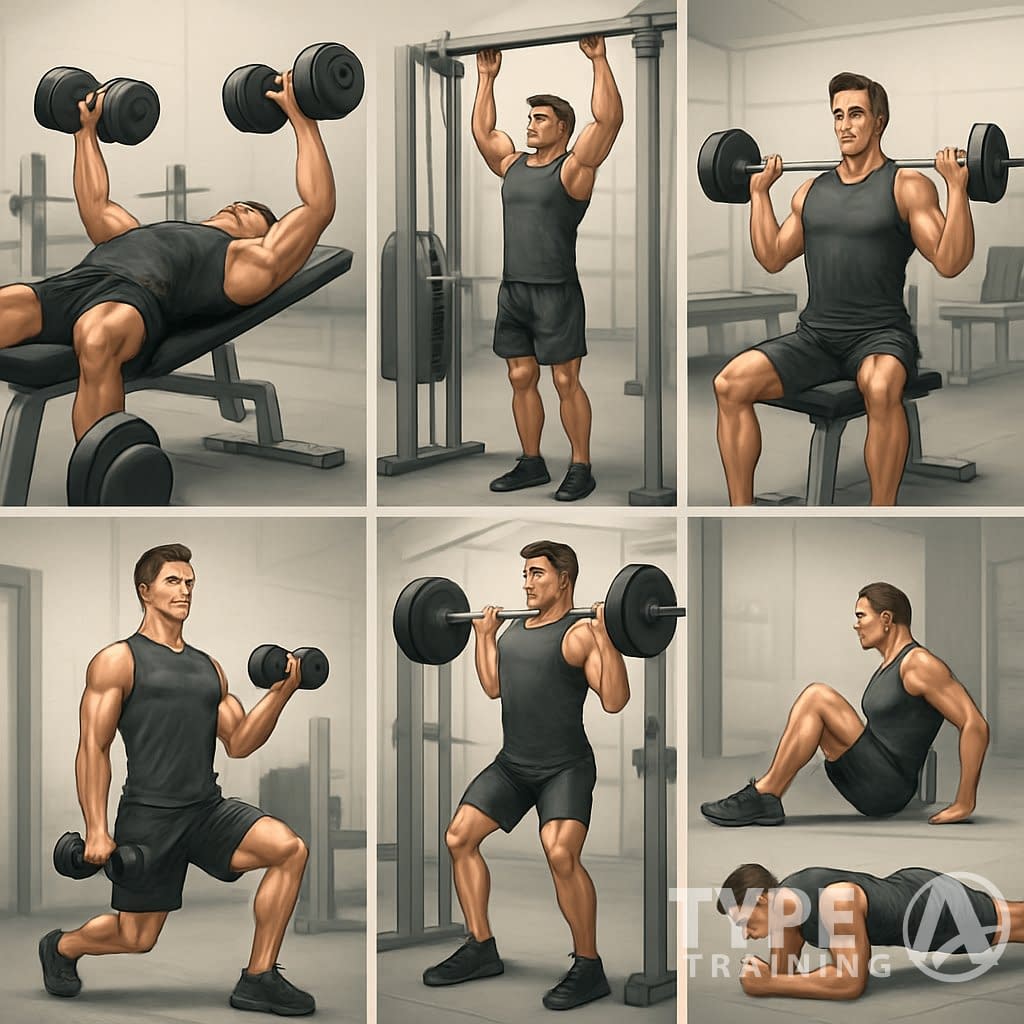
The 6 day bro split is a workout routine that assigns each day to a specific muscle group, six days a week, with one rest day. You get to hammer each body part with more sets and exercises, but there’s still enough time between sessions for things to heal up.
Origins and Popularity
The bro split has been a bodybuilding classic for decades. Back in the 1970s and 80s, legends like Arnold Schwarzenegger used body part splits to build their iconic physiques.
Most classic bro splits run for 5 days, but the 6 day version has caught on with lifters who want even more training frequency. The 6 day split usually breaks up leg training into two days—like quads one day, hamstrings the next—so you can really focus.
A lot of gym-goers stick with this split because it’s simple and lets you zero in on each muscle. The “one body part per day” idea is easy to remember and plan around, which probably explains why it’s still so popular.
How the Bro Split Compares to Other Training Splits
The 6 day bro split stands out from other splits. While upper/lower routines hit muscles twice a week, the bro split usually smashes each muscle group once per week but with much higher volume.
Push/pull/legs (PPL) routines spread the work across several days, but the bro split lets you throw in more exercises for each muscle group in a single session. The Arnold split sometimes combines chest and back, but the bro split keeps them separate.
Full-body routines work everything 3-4 times a week but with less volume per session. If you’d rather spend a whole session on just one or two muscle groups, the bro split is probably more your style.
Core Principles of the Bro Split
The main idea behind a 6 day bro split is specialization. You spend a whole workout on just one muscle group, so you can really push it with different exercises and high volume.
A typical 6 day bro split might look like this:
- Day 1: Chest
- Day 2: Back
- Day 3: Shoulders
- Day 4: Arms (biceps/triceps)
- Day 5: Quads/Calves
- Day 6: Hamstrings/Glutes
- Day 7: Rest
While one muscle group is recovering, you’re working another. That way, you can hit the gym six days a week, but each muscle still gets about 5-6 days of rest.
Exercise variety matters, too. Each session usually has 4-6 different movements for the target muscle, so you hit it from different angles.
Weekly Structure and Muscle Group Breakdown
The 6-day bro split carves up your week by muscle group. You can really focus on one or two body parts each day, giving them time to rest before you hit them again.
Example 6 Day Bro Split Workout Plan
A solid 6-day bro split might follow this pattern:
- Monday: Chest
- Tuesday: Back
- Wednesday: Shoulders
- Thursday: Arms (Biceps and Triceps)
- Friday: Legs
- Saturday: Core/Abs or Weak Points
- Sunday: Rest
This setup lets you go all-in on each muscle group. For chest, you might do bench press, incline dumbbell presses, and cable flyes.
Back day? Deadlifts, rows, and pull-ups are all in play.
Feel free to tweak the split based on your needs. Some people like to pair smaller muscle groups, like shoulders with arms, or abs with legs.
Muscle Groups Trained Each Day
The traditional bro split breaks things down like this:
Chest – Focus on the pecs with pressing and fly moves.
Back – Hit your lats, rhomboids, and spinal erectors with pulls and rows.
Shoulders – Work all three deltoid heads and traps.
Arms – Go after biceps, triceps, sometimes forearms.
Legs – Smash quads, hams, glutes, and calves.
Core/Abs – Target your abs, obliques, and sometimes lower back.
By splitting things up, you can use several exercises for each area and pile on the volume.
Training Frequency and Session Duration
With a 6-day workout split, you’ll train each big muscle group once a week, but with high intensity and a lot of work.
Most sessions land in the 45-75 minute range. That depends on your experience, how long you rest, how many exercises you do, and how hard you’re pushing.
Some research says muscles can recover in 48-72 hours, so training them once a week might not be perfect for everyone. Still, if you’re working hard and piling on the sets, you can get enough stimulus for growth.
Try to get close to failure on your main sets. That’s where the real muscle-building magic happens.
Key Exercises and Movements
A good 6-day bro split relies on smart exercise choices. You want to mix heavy compound lifts with isolation moves to hit all the muscle fibers.
Big Compound Lifts
Every solid bro split workout starts with compound lifts. The squat is king on leg day—it works your quads, hams, glutes, and makes your core work, too.
The bench press is your chest builder, hitting pecs, front delts, and triceps. For back, nothing beats the deadlift—it works your whole backside from calves up to your traps.
Throw in overhead presses for shoulders and barbell rows for back. These lifts should lead off your workouts, when you’re freshest.
Use good form and pick the right weight. You want to challenge yourself, but not get sloppy.
Accessory Exercises for Muscle Growth
After your big lifts, accessory moves let you really dial in on weak points. For chest, the incline dumbbell press hits your upper chest in a way the flat bench can’t.
Back day? Add pull-ups, lat pulldowns, and different row variations to work your back from all angles.
For legs, tack on leg extensions, leg curls, and calf raises after squats.
Shoulders need lateral raises, face pulls, and rear delt flyes to round out all three deltoid heads. Arms? Go for skull crushers, cable pushdowns, barbell curls, and hammer curls.
Accessory work usually works best in the 8-15 rep range. You can rack up extra volume without crushing your whole body.
Sample Exercise Selection for Each Day
The 6-day bro split gives you one main muscle group per session. Here’s a sample breakdown:
Chest Day:
- Bench Press: 4 sets of 6-8 reps
- Incline Dumbbell Press: 3 sets of 8-10 reps
- Cable Flyes: 3 sets of 10-12 reps
- Dips: 3 sets to near failure
Back Day:
- Deadlift: 3-4 sets of 5-8 reps
- Pull-Ups or Lat Pulldowns: 3 sets of 8-12 reps
- Barbell Rows: 3 sets of 8-10 reps
- Cable Rows: 3 sets of 10-12 reps
Leg Day:
- Squats: 4 sets of 6-8 reps
- Leg Press: 3 sets of 8-12 reps
- Romanian Deadlifts: 3 sets of 8-10 reps
- Leg Extensions and Curls: 3 sets of 12-15 reps each
Pick weights that push you but let you keep good form. Your workout schedule should make sure muscles get enough rest before you hit them again.
Hypertrophy and Strength Benefits
A 6-day bro split can be a real game-changer for muscle growth and strength. You get to focus hard on each muscle group, then let it recover while you train something else.
Mechanisms of Muscle Growth
Muscle hypertrophy happens with mechanical tension, metabolic stress, and muscle damage. When you train hard on a bro split routine, you create tiny tears in your muscles. Your body repairs these, making you stronger and bigger.
Focusing on one muscle group per workout means you can use more exercises and techniques for that area. More total volume is a big trigger for muscle growth.
Time under tension matters, too. With a 6-day split, you can play with rep ranges (8-12 is the sweet spot for most people) and slow tempos to keep your muscles working.
Compound lifts in bro splits also boost hormones like testosterone and growth hormone, which help with recovery and growth.
Maximizing Hypertrophy in a Bro Split
To get the most out of your 6-day bro split, make progressive overload a habit. Over time, try to add weight, reps, or even sets.
Effective Hypertrophy Techniques:
- Drop sets (lower the weight after failure and keep going)
- Supersets (pair exercises with little rest)
- Rest-pause training (quick breaks during a set)
- Mind-muscle connection (really focus on the muscle you’re working)
Nutrition backs up your training. Shoot for 1.6-2.2g of protein per kg of bodyweight each day and stay in a slight caloric surplus to build muscle.
Keep rest between sets at about 60-90 seconds. This helps you recover but still keeps the muscle pumped for the next round.
Improving Strength With a 6 Day Bro Split
Bro splits are often seen as a hypertrophy tool, but you can absolutely build strength with them. Start your sessions with big compound lifts, using heavier weights and lower reps (think 4-6).
Switch things up with periodization. Alternate between strength-focused weeks (heavier, fewer reps) and weeks where you chase the pump (moderate weight, higher reps).
Strength-Building Principles:
- Push for progressive overload on the main lifts
- Stick to strength rep ranges (3-5) for your key moves
- Keep your form tight, even as the weight climbs
- Give muscle groups enough time to recover before hitting them again
Training six days a week on a bro split helps your nervous system get better at firing up muscle fibers. That means more strength over time.
Track your lifts. Even tiny jumps in weight or reps add up after a few months.
Adaptations for Experience Level
You can tweak a 6-day bro split to fit your experience and body type. Lifters with lots of experience or those who find it tough to gain muscle might need a different approach.
Advanced Lifters and Competitive Bodybuilders
If you’re an advanced lifter or prepping for a show, a 6-day bro split delivers serious muscle-building potential. Try adding advanced techniques:
- Double split sessions – Train twice a day, hitting different muscles
- Periodization – Rotate strength, hypertrophy, and definition phases
- Advanced intensity – Use drop sets, rest-pause, and forced reps
You can also use more exercise variations to target every angle. For example, break your chest day into upper, mid, and lower chest, using 4-5 moves for each.
Recovery is everything at this level. Make sleep a priority (7-9 hours) and schedule a deload week every 6-8 weeks to avoid burning out.
Considerations for Hardgainers
If you’re a hardgainer, the 6-day split needs a few tweaks to work well:
- Lower the volume – Do fewer sets (8-12 per muscle group) but keep the effort high
- Eat more – Add 300-500 calories above maintenance
- Stick to compound lifts – Use big, multi-joint moves for the best results
Take longer rest breaks (2-3 minutes) between sets to recharge. This helps you lift more each set.
You might want to combine some smaller muscle groups to cut down on overall fatigue but still train six days a week.
Recovery, Nutrition, and Rest Days
When you follow a 6 day workout split, recovery matters just as much as the workouts. With only one rest day, your nutrition and recovery habits will make or break your progress.
Optimizing Recovery and Avoiding Overtraining
Training six days a week is tough on your body. To avoid overtraining, you need smart recovery strategies. Prioritize sleep—aim for 7-9 hours of quality rest every night.
Add in light cardio, stretching, or foam rolling to help with soreness and blood flow. Ten to fifteen minutes of mobility work after lifting goes a long way.
Cold therapy (like ice baths) and switching between hot and cold can cut down on inflammation and help you bounce back faster.
Watch for signs of overtraining:
- Always feeling tired
- Dropping performance
- Getting injured a lot
- Mood swings
- Trouble sleeping
Pull back on intensity if you notice these.
Role of Nutrition and Supplementation
Solid nutrition fuels your workouts and recovery. On a bro split, you’ll need more calories and macros than most.
Daily protein targets:
- Bulking: 1.6-2.2g per kg bodyweight
- Cutting: 2.0-2.4g per kg bodyweight
Eat most of your carbs around your workouts. Try for 4-7g per kg bodyweight a day, bumping it up on training days.
Don’t skip healthy fats (0.5-1g per kg). They’re important for hormones and recovery.
Supplements that actually help:
- Creatine monohydrate (3-5g daily)
- Whey protein (if you need help hitting your protein goal)
- Electrolytes (especially if you sweat a lot)
Drink more water than you think you need—3-4 liters a day is a good target for a 6 day plan.
Importance of Rest Days
That single rest day in a 6 day split is precious. Use it to fully recover from resistance training.
Light activities like walking, swimming, or yoga are fine, but keep it to 30-45 minutes. You want to boost blood flow, not drain your recovery.
A lot of lifters like to use rest days for:
- Stretching
- Massage
- Meditation
- Prepping meals for the week
If you’re cutting, rest days can be extra tough. Sometimes it helps to eat a little more—an extra 100-200 calories—to help your body recover.
Growth happens when you rest, not when you train. Don’t forget that.
Equipment and Conditioning Considerations
A good 6-day bro split needs the right equipment and a smart approach to cardio. The right tools help you build muscle, and smart conditioning keeps you fit and helps with recovery.
Equipment Required for a 6 Day Bro Split
One of the best things about a bro split is how flexible it is with equipment. At the very least, you’ll want:
- Free weights: Dumbbells and barbells for big lifts and isolation work
- Cable machines: Great for moves like flyes and pulldowns
- Weight benches: Flat, incline, and decline for all kinds of chest and shoulder work
- Squat rack or power cage: Crucial for leg day and back training
A bro split routine usually gives each muscle group its own day, so having some specialty gear can help. EZ curl bars for arms, a leg press for quads, or a pull-up bar for your back can add variety.
If you’re training at home, focus on adjustable dumbbells, a solid bench, and resistance bands to mimic cable moves.
Integrating Cardio and Conditioning
Balancing cardio with a tough 6-day lifting routine takes some planning. If you push cardio too hard, you might notice your recovery slows down.
Here are a few options to try:
- Low-intensity steady state (LISS): Knock out 20-30 minute sessions after lifting, or squeeze them in on a rest day.
- High-intensity interval training (HIIT): Go for quick 10-15 minute bursts, maybe 2-3 times a week.
- Active recovery: Take a light walk or hit the pool on days off.
Your rest periods between sets actually hit your cardiovascular system, too. If you’re lifting for strength, rest about 2 minutes between sets.
For pump-style training, keep rest shorter—think 30-90 seconds. That way, you’ll build muscle and get some conditioning at the same time.
You could even throw in circuit training once a week. Just move quick between exercises and you’ll keep your heart rate up without sacrificing muscle.
